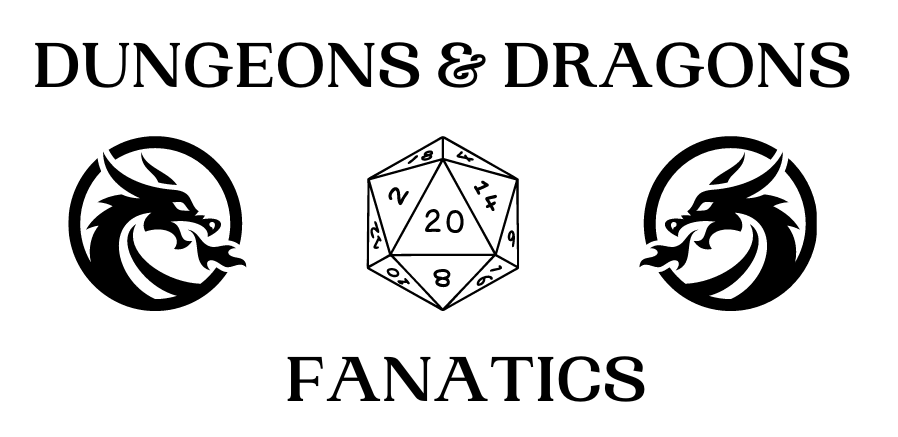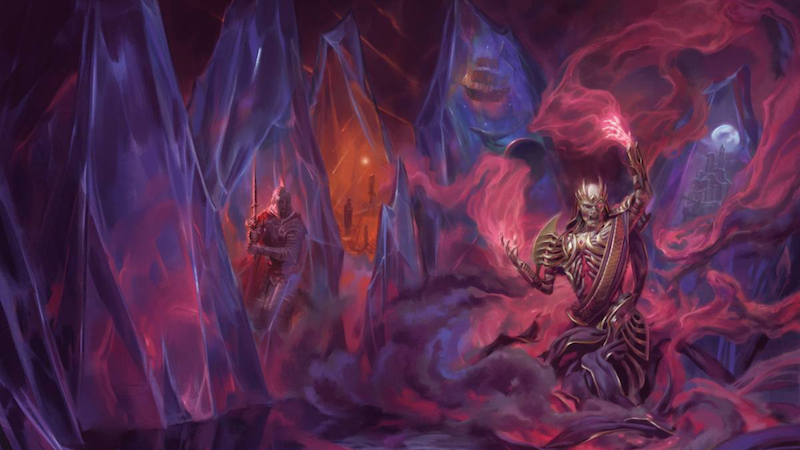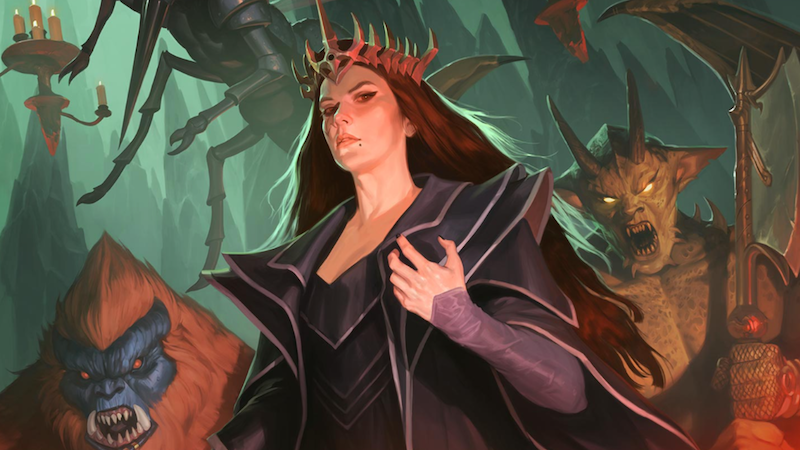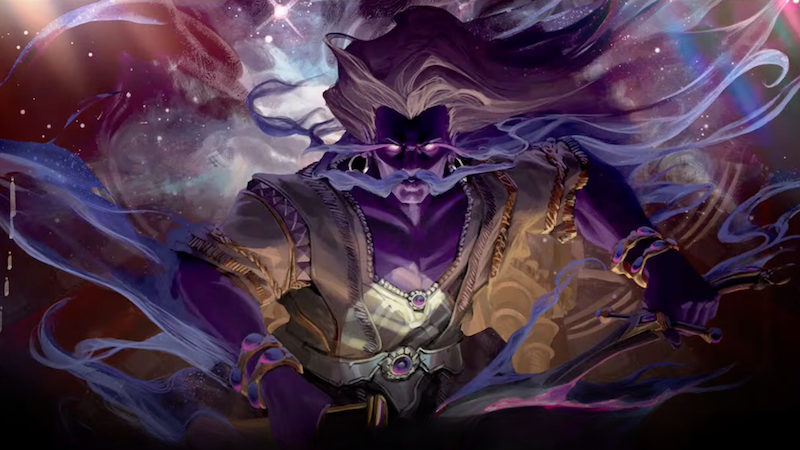

The Greyhawk Novels: A Reader’s Guide
As an Amazon Associate I earn from qualifying purchases.
We take a closer look at the world of Oerth and the legacy of the Greyhawk books
First appearing in 1972, Greyhawk is not only one of the most recognized Dungeons & Dragons settings but also one of the oldest, originally starting out as the game world in the personal campaign run by D&D co-creator Gary Gygax. And while the setting has evolved over the years, appearing in every edition of D&D, much of the world was developed in a series of novels published over the last four decades.
To help you discover the literary side of Oerth, we’ve put together this complete reader’s guide to the Greyhawk novels. To keep things simple, we’ve broken the books out by series and included the publication dates, links to further readings and a brief description of what they’re all about.
But enough talk. Grab your sword and spellbook as we venture into the incredible world of the Greyhawk novels.
Table of Contents
What is Greyhawk?
How many Greyhawk novels are there?
Does Greyhawk have a reading order?
What are the books in chronological order?
What are the best Greyhawk novels?


What is Greyhawk?
Greyhawk is a Dungeons & Dragons campaign setting that introduced many of the tropes that found in later D&D worlds, including a variety of monsters, magical abilities and themes. Much of the setting’s focus in The Flanaess, a region in the eastern part of the continent of Oerik. The setting also introduced Castle Greyhawk, one of D&D’s very first mega dungeons. Additionally, Greyhawk would introduce a number of iconic D&D characters, including the powerful sorcerers Mordenkainen and Bigby, both of whom would appear in future game materials.
Greyhawk itself was created by D&D co-creator Gary Gygax in the early 1970s. The world began as a simple dungeon under an unnamed castle, but as Gygax developed the world during play sessions with family and friends, it was later expanded to include the nearby city of Greyhawk and eventually the larger world of Oerth. As the early prototype of what would eventually become Dungeons & Dragons developed, Gygax continued to grow his Greyhawk homebrew setting, and many of the world’s elements would appear in early D&D materials.
The first official Greyhawk D&D product was The World of Greyhawk folio, which was released in 1980. The setting would later be used in dozens of other modules and campaign books in the first, second, third, fourth and fifth editions of D&D. The most recent appearance of the world is in the Ghosts of Saltmarsh campaign book for D&D 5e, which is an update of several classic adventures. Notably, the first Greyhawk novel was released in 1979 and was written by celebrated science fiction author Andre Norton, making it the first official D&D novel ever published.


How many Greyhawk novels are there?
As of July 2023, there are 24 Greyhawk novels. Despite the popularity of the setting, however, the last novel was published in 2006. Unlike the Forgotten Realms books, which continue to be published to this day, new Greyhawk novels are unlikely given Wizards of the Coast’s current focus and product lines.
Notably, in addition to the novels and game materials, Greyhawk has also appeared in several other mediums, including trading cards, comic books, and the popular Greyhawk Wars board game.
Do the Greyhawk novels have a reading order?
No. There is no reading order to the Greyhawk novels. That being said, the majority of books are part of a series which do need to be read in order. For example, the Gord the Rogue series consists of five books which must be read in order. There are, however, several books which are standalone works. For example, Nightwatch is a single novel, as are the books featured in the Greyhawk Classics series.
For new readers, we recommend starting with the two books in the Greyhawk Adventures series, as they are written by Gary Gygax and do a great job of setting up the world and introducing readers to some of the key concepts and lore that make up the world of Oerth. The five books found in the Master Wolf series are also an excellent entry point for new readers.


The Greyhawk novels in chronological order
Below we’ve broken out the complete list of every Greyhawk book published to date. For ease of reference, we’ve listed the series in chronological order by publication date.


1. Quag Keep Series
Written by science fiction grand master Andre Norton, Quag Keep was actually published before Greyhawk was an official campaign setting, making it the first D&D novel. The story involves role playing gamers from the real world being transported to the world of Greyhawk. Notably, Norton passed away before she could finish the sequel, which was eventually completed several years later by longtime TSR contributor Jean Rabe.
1. Quag Keep (February 1979)
2. Return to Quag Keep (June 2006)


2. Greyhawk Adventures
Given the popularity of the Dragonlance books, which were first published in 1984, D&D owner TSR decided to create a similar ongoing series of Greyhawk novels. The first two books – published under the banner of “Greyhawk Adventures” – were written by Dungeons & Dragons co-creator Gary Gygax. The novels follow the adventures of Gord the Rogue, an orphan beggar who finds himself battling criminal elements and demonic forces as he grows in power and finds himself at the centre of a larger cosmic struggle.
1. Saga of Old City (September 1985)
2. Artifact of Evil (March 1986)


3. Gord the Rogue Series
While the adventures of Gord the Rogue were to be continued in future D&D novels, Gygax left TSR in 1986 after a series of financial and legal issues plagued the company. However, he also maintained the rights to the character of Gord, and as such decided to continue his story in a series of five standalone novels set in the world of Oerth. As such, this is essentially an “alternate” version of Greyhawk that differs from the version of the world which was published by TSR in other novels and game materials.
In Gygax’s standalone series, Gord continues his adventures from the first two Greyhawk Adventures books, learning he possesses unique powers and is closely aligned with a mysterious deity known as the Cat Lord. Notably, Gygax would not continue to write any future Gord novels or any other works set in the world of Greyhawk, with the license for the world eventually reverting back to TSR and later Wizards of the Coast.
1. Sea of Death (July 1987)
2. Night Arrant (September 1987)
3. City of Hawks (November 1987)
4. Come Endless Darkness (March 1988)
5. Dance of Demons (November 1988)


4. Master Wolf Series
Written by fantasy writer Rose Estes, this series was designed to continue the Greyhawk book line after Gary Gygax’s departure from TSR in 1986.
The books follows the adventures of Mika, a young shaman of the Wolf Nomads. In the series, Mika is cast out of his tribe after the death of his father and sets out to redeem himself and discover more about his family’s magical ancestry. Along the way he encounters a variety of locations and monsters from the world of Oerth, including facing down the demon Maelfesh and the all-powerful Spider Queen.
Later books in the series also introduce a variety of new characters, including Queen Fern-Clyffe, ruler of the Yeomanry League region of Oerth, and the plucky the mage-rat known as Pfee-Guh.
1. Master Wolf (March 1987)
2. The Price of Power (August 1987)
3. The Name of the Game (June 1988)
4. The Demon Hand (February 1988)
5. The Eyes Have It (August 1989)


5. Night Watch
Don’t let the generic fantasy cover fool you, this book is actually a Greyhawk novel and was part of a short lived product line called “TSR Books.” The story itself is set several hundred years after the previous Greyhawk novels and follows the exploits Garett Starlen, a night shift commander with the Free City of Greyhawk. Garett sets out to uncover who has murdered all the members of the Council of Seers, a group of powerful magic users tasked with protecting the lands of Oerik from evil.
1. Night Watch (July 1990)


6. Greyhawk Classics Series
This series takes some of the most popular old school Greyhawk D&D adventure modules and gives them a unique literary twist. Probably the most famous of these is the adventure The Tomb of Horrors, which was first published in 1978 and is considered one of the most difficult dungeons of all time.
Several different authors contributed to the series, with each book taking many of the elements from the original adventures and using them to flesh out a larger plot.
Notably, there was also a novelization of the adventure moduel Expedition to the Barrier Peaks, which was by popular fantasy author Roland J. Green. The book, however, was unpublished by TSR for unknown reasons (although versions of it have appeared online).
1. Against the Giants (July 1999)
2. White Plume Mountain (October 1999)
3. Descent into the Depths of the Earth (June 2000)
4. Queen of the Demonweb Pits (October 2001)
5. The Temple of Elemental Evil (May 2001)
6. Keep on the Borderlands (November 2001)
7. The Tomb of Horrors (February 2002)


7. The Endless Quest Books
While technically these aren’t traditional novels, we’ve included these books on the list since they don’t really fit into the D&D Greyhawk game materials. These two books were part of TSR’s “Endless Quest” books, which were modeled after the popular Choose Your Own Adventure series, with players deciding which actions to take and flipping to the corresponding section. TSR released several books set in various D&D settings, but these two novels occur specifically in the world of Greyhawk.
1. Siege of the Tower (July 1994)
2. Bigby’s Curse (September 1995)
What are the best Greyhawk novels?
With dozens of Greyhawk books to choose from, it’s hard to know where to start. Many new readers begin with Greyhawk Adventures, since it’s actually the first official TSR series to be published and is written by Greyhawk creator Gary Gygax (the Quag Keep books may have been published first, but are a little hit or miss in terms of the lore of Oerth). That being said, below are our picks for the best Greyhawk novels and the chronological order we’d recommend reading them in.
The other novels are fairly hit or miss, and more likely to be of interest solely to completionists or hardcore Greyhawk fans.


See Our Complete D&D Book Coverage
Visit our D&D Books page for more reviews of the latest novels and game books.


Ollie Delano is a Staff Writer who lives in Chicago, Illinois where he majored in Journalism at Northwestern University’s Medill School of Journalism. He’s been playing Dungeons & Dragons for over 10 years and currently plays in a weekly game group where he rolls way too many natural 1s and chugs way too much Mountain Dew. His favorite D&D campaign setting is Eberron and his favorite character to play was a Tiefling rogue named Draxiss who enjoys both literal and figurative backstabbing.
*We are a member of the Amazon Affiliate marketing program, which provides us with a small commission on any sales at no additional cost to you the consumer.





